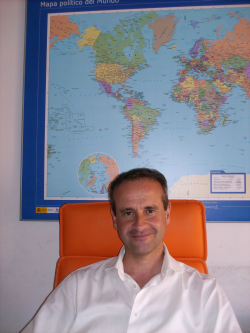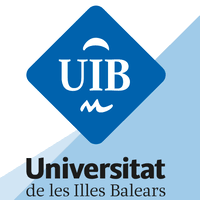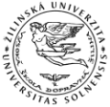Keynotes
Moving Forward with Real-Time Human Health Monitoring via Nanonetworks
Abstract
Current procedures for human health monitoring are based on measuring the so-called biomarkers, which are quantifiable indicators of normal/abnormal health condition or pathogenic state. However, the assessment of these biomarkers relies on periodical clinical exploration, which is highly disturbing for patients and, more importantly,it does not guarantee early diagnosis. This is especially critical in the case of serious diseases, like cancer. Aside from preventive actions, effective fight against cancer demands for the continuous monitoring of key indicators, at least from a certain age. At this point, nanonetworking emerges as a disrupting technology that can provide the necessary infrastructure for real-time intra-body biomarker monitoring. Nanonetworks are networks of nanoscale devices that are predicted to have limited sensing, processing, communication and actuation capabilities. Accordingly, such devices, namely nanonodes, can be permanently deployed within the human body to continuously sense the level of a specific biomarker revealing a particular illness. Then, they can send their readings to a nanointerface, which can establish communication with a hand-held or wearable device connected to Internet. In addition to provide a general overview of such an exciting application field, the present keynote speech focuses on the deployment of a nanonetwork over the cardiovascular system for cancer monitoring. Specifically, different aspects are addressed: modelling approach, mathematical treatment, communication strategy and evaluation tools, in particular particle-based simulators.
Short Biography
Dr.Sebastià Galmés is a Telecommunications Engineer from the Polytechnic University of Catalonia (UPC) since 1989 and a PhD in Computer Science from the University of the Balearic Islands (UIB) since 1999. He is currently a Senior Lecturer in the Department of Mathematical and Computer Sciences of the UIB. He was a visiting professor at North Carolina State University (NCSU), United States, during the 1992-1993 academic year. He has been a member of IFIP Working Group 6.3 (IFIP WG 6.3 Performance of Computer Networks) since 1999 and IEEE ComSoc since 2010. He has also been Area Editor of Elsevier's Simulation Modeling Practice and Theory (SIMPAT) magazine, between the years 2010 and 2018.
His current lines of research are molecular communications and sensor networks, and the applications of these technologies to human health control. He has collaborated on numerous occasions as a member of the program committee and reviewer of various congresses and journals, respectively, of recognized international prestige, and has participated in various nationally and internationally funded research and cooperation projects. As an author, he has published articles in congresses and magazines that occupy relevant positions in the best known rankings. Some examples are IEEE INFOCOM, ACM SIGMETRICS, IEEE / ACM MASCOTS, IFIP Networking, IEEE Transactions on Communications, IEEE Transactions on Wireless Communications, IEEE Transactions on Nanobioscience and MDPI Sensors.
In addition, he is co-editor of the book Network Control and Engineering for Quality of Service, Security and Mobility, III (Springer, 2004), author of a Spanish patent in 2009, granted through the prior examination system, author of two tutorials on sensor networks (2011 and 2012), and has been Chairman of the Organizing Committee of the International Conference on Cooperative Design, Visualization and Engineering (CDVE) in its 2013, 2015, 2017 and 2019 editions.
Mobile Phone Records to feed Activity-based Travel Demand Models
Abstract
Activity-based models appeared as an answer to the limitations of the traditional trip-based and tour-based four-stage models. The fundamental assumption of activity-based models is that travel demand is originated from people performing their daily activities. This is why they include a consistent representation of time, of the persons and households, time-dependent routing, and microsimulation of travel demand and traffic. In spite of their potential to simulate traffic demand management policies, their practical application is still limited. One of the main reasons is that these models require a huge amount of very detailed input data hard to get with surveys. However, the pervasive use of mobile devices has brought a valuable new source of data. The work presented here has a twofold objective: first, to demonstrate the capability of mobile phone records to feed activity-based transport models, and, second, to assert the advantages of using activity-based models to estimate the effects of traffic demand management policies. Activity diaries for the metropolitan area of Barcelona are reconstructed from mobile phone records. This information is then employed as input for building a transport MATSim model of the city. The model calibration and validation process proves the quality of the activity diaries obtained. The possible impacts of a cordon toll policy applied to two different areas of the city and at different times of the day are then studied. Our results show the way in which the modal share is modified in each of the considered scenarios. The possibility of evaluating the effects of the policy at both aggregated and traveler level, together with the ability of the model to capture policy impacts beyond the cordon toll area confirm the advantages of activity-based models for the evaluation of traffic demand management policies.
Short Biography
Jose Ramasco is a staff scientist of the Spanish National Research Council (CSIC) and he is working at the Instituto de Física Interdisciplinar y Sistemas Complejos IFISC, a joint research center between the Universitat de les Illes Balears UIB and CSIC located in Palma. His main research areas are complex systems, including networks and their applications to socio-technical systems. In particular, his work in the last years have been focused on mobility, transport networks and urban systems. Jose is author to over 80 articles published in international journals, including a recent review on the use of computation and data from communication and information technologies to characterize mobility.
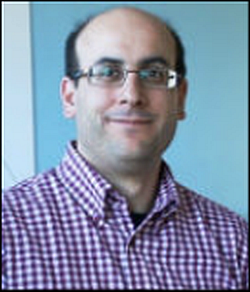
Invited Speaker
New Framework for Multi-Agent Systems: A Possibilistic Viewpoint
Abstract
Multi-Agent Systems (MAS) are systems composed of two or more computational autonomous entities (agents) which interact between them. MAS can model a huge number of realistic scenarios, such as groups of people or colonies of robots performing a set of tasks. One of the main decision that each agent must make is to select the next place to visit or the next task to perform. In many cases this decision is made following probabilistic Markov chain, where the next task to carry out depends only on its current task and on a probabilistic transition function. Such probabilistic approaches presents several handicaps, for instance, a asymptotic converge to the system's stable state, problems when more than two tasks are considered, ans so on. Due to those inconveniences, we will introduce a new possibilistic theoretical formalism for multi-agent systems. The task allocation is implemented considering transition possibilities instead of transition probabilities and possibilistic Markov chains (also known as fuzzy Markov chains) instead of the classical probabilistic ones. The theoretical and empirical results demonstrate, among other advantages, that the number of steps needed to get a stable state with fuzzy Markov chains is reduced more than 10 times and the system's behaviour prediction is improved compared with their probabilistic counterpart. Moreover, most of the possibility transition function are a specific kind of mathematical functions called indistinguishability operators. This kind of operators provides an excellent theoretical foundation to study the properties of a great number of MAS.
Short Biography
José Guerrero received his degree and PhD (2011) in Computer Science from the University of the Balearic Islands (UIB) where he is currently a lecturer and post-doctoral researcher at the Department of Mathematics and Computer Science. His research interest includes multi-agent task allocation mechanisms with auction and swarm coordination mechanisms using fuzzy and possibilistic approaches.
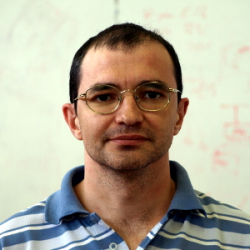
Dep. of Mathematics and Computer Science
Universitat de les Illes Balears
Palma de Mallorca, Spain
